The treasured taste of lotus tea
(VNF) - Like many other tea producing regions, Vietnamese have discovered an exotic way of adding more aroma to the drink made from tea leaves. With the presence of flowers, Vietnamese fragrant tea is no doubt a quintessence in the world of beverage.
History of lotus tea
The scent of flowers twisting harmoniously with the sweetly bitter taste of tea creates a distinctive flavor, texture, and color. chrysanthemum, tea buds with Sói flower, and exceptionally, the favorite quality “trà mạn” with jasmine and lotus.
Among all the types of fragrant tea, lotus tea is considered a pride of Vietnamese tea's culture.
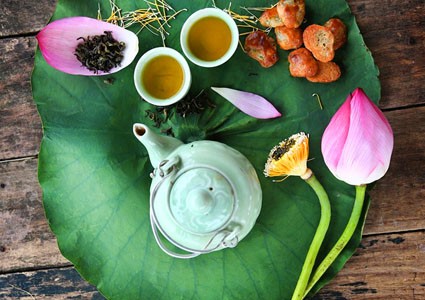 |
Illustrative photo (source: trahoasen.vn)
Lotus was originally created in the Nguyen Dynasty during the 19th century, in dedication of King Tu Duc. At night when the nectar was at its fullest, the servants would row out in the lake where the lotus blossoms grew. Very carefully and gently, they would peel back each fragile petal of the blossom and fill it with green tea. Then the flower was closed up, and the petals bound with ribbon or silk string, keeping the tea safe and dry as it absorbed the scent of the lotus overnight, but that not the end, early in the morning, they rowed out again not only to collect the tea but also to gather nighttime dew, just enough for a single tea pots. Using a high-grade green tea base from the highland of Vietnam, the Lotus will scent the tea with its luscious fragrance, produces a lovely, sweet aroma, with hints of vanilla tea.
Treasured gift of Hanoi
Nowadays, lotus tea has become more popular around Vietnam, especially in Hanoi, where the making process has become an art. For a long time, people in villages around the West Lake in Quang Ba, Tay Ho and Nghi Tam have been well known for making lotus tea.
Lotus in this area of Hanoi is a rare variety and originated from Tri Pond near Tay Ho Temple. It is called “Bach diep” with large petals and a pleasant scent. Since the feudal regime, the locals learned how to scent tea with lotus which was a valuable offering to kings and mandarins.
 |
Illustrative photo (source: Huong Mai Cafe)
Old villages lie around the bank of the West Lake are places where the most skillful tea makers could be found. The people in Quang Ba, Tay Ho and Nghi Tam village are famous for being the best Lotus tea embalmer in Hanoi with inherited family’s secret receipts for hundred years.
In the time of monarchy, Lotus tea was served only to high-class nobles or the Royals hence it was considered to be luxury and ocpulent, therefore only limited amount was produced. Later on, Lotus tea is still regarded as precious tea which is used in special occasion or ceremony only, to express the host’s hospitality.
Made tea with heart
The process of making lotus tea is not only time-consuming but also very elaborate.
In the past, people used to row a small boat out across lotus ponds to leave a pinch of dried tea inside each lotus flower that had just begun to open before dawn during sunny days. They will pick the lotus flowers to retrieve their tea the next morning after the tea absorbs the lotus’s scent.
 |
Illustrative photo (source: Leastphoto)
Lotus tea in fusion is a complicated process. Lotus flowers must be picked when they have just bloomed. Then, the maker must carefully remove the stamens of the lotus as these are used to impart the scent to the tea. This step requires extreme care in order not to crush the lotus stamens. It takes from 1,200-1,400 lotus flowers to make just one kilo of lotus tea.
Next, the tea will be mixed with the lotus stamens to infuse. The maker will spread one tea layer, followed by one layer of lotus stamen. Finally, the tea will be covered with paper to preserve the scent. The tea must be kept there between five and seven times repeatedly so that the lotus fragrance and flavor can be absorbed deeply into the tea. Before each reinfusion, the tea must be dried, and the maker must sift out the used lotus stamen and spread a new layer.
Nowadays, in addition to the aforementioned method, there are several ways of making lotus tea and the most popular is mixing tea with lotus anthers. The locals pick lotus flowers and then collect the anthers for mixing with the tea. A layer of tea and a thin layer of lotus anthers are staggered and then wrapped in moisture-proof paper in order to preserve both the flavours of the tea and the lotus anthers. After three days, the mixture of tea and lotus anthers is separated and the process is repeated seven times. A batch of lotus tea is completed after 20 days.
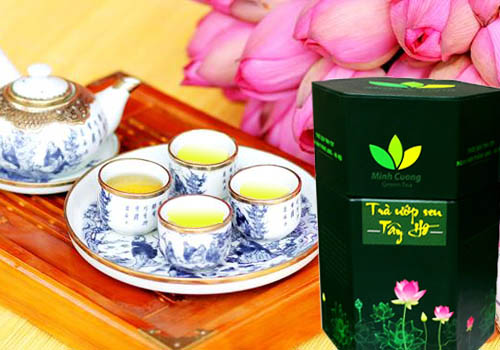 |
Illustrative photo (source: trahoasen.vn)
The tea maker must dry the tea in a special way so that the finished tea is not only dry, but also retains the full scent of the lotus. “The water in the perfect lotus teapot will have the colour of honey and the subtle fragrance of lotus.”
No wonder why Lotus tea has become a pride of Hanoians!
The delicate making process which produces a delicate taste has made lotus tea a delicate gift for tourists coming to the Hanoi or those who are living far away from the capital.
Facts you should know about lotus tea:
1000 Lotus blossoms deliver only 7 - 8g of stamen, enough talk about how rare and precious this scenting material is. But it doesn’t mean that 1000 Lotus blossoms can provide enough stamens for scenting 1kg of Lotus tea. 2g of stamen is enough for scenting 1kg of tea, but we all have known that the scent of Lotus is just subtle, then this scenting step require to be repeated again and again 7 -8 times to make the tea fully embalmed with the fragrance of Lotus, which mean 1,4 – 1,6kg of Lotus stamen is needed, at least 1400 Lotus blossoms to scent a kilo of tea. Such an enormous number! No surprise that a kilo of this meticulous tea could cost up hundreds dollar per kilo, now you’ve understand why, it worth every penny./.
( VNF )
Recommended
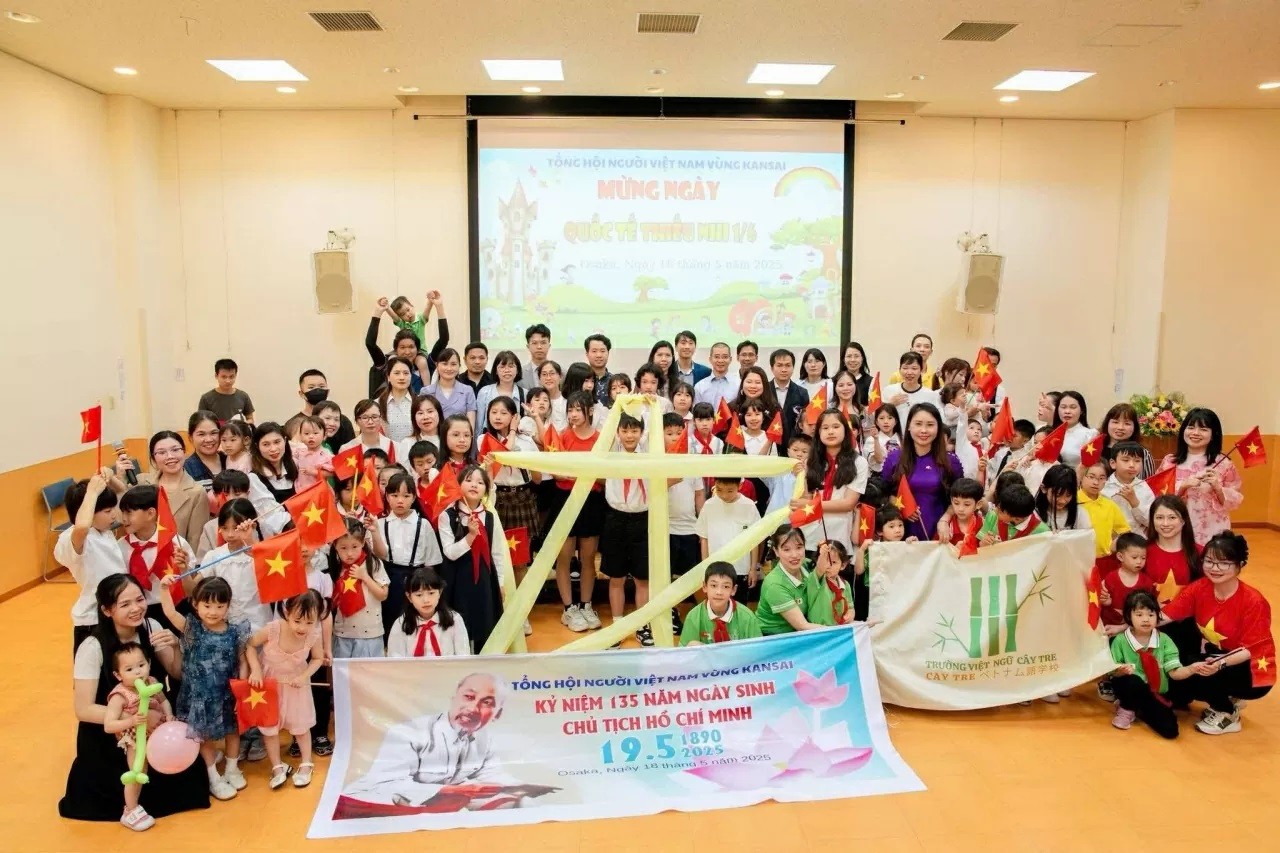 Viet's Home
Viet's Home
Vietnam Through Paintings of Overseas Children in Japan
 Viet's Home
Viet's Home
Uncle Ho through Documents and Artistic Creations
 Viet's Home
Viet's Home
Compassion House - John Donovan Project Supports 10 Great Solidarity Houses in Tien Giang
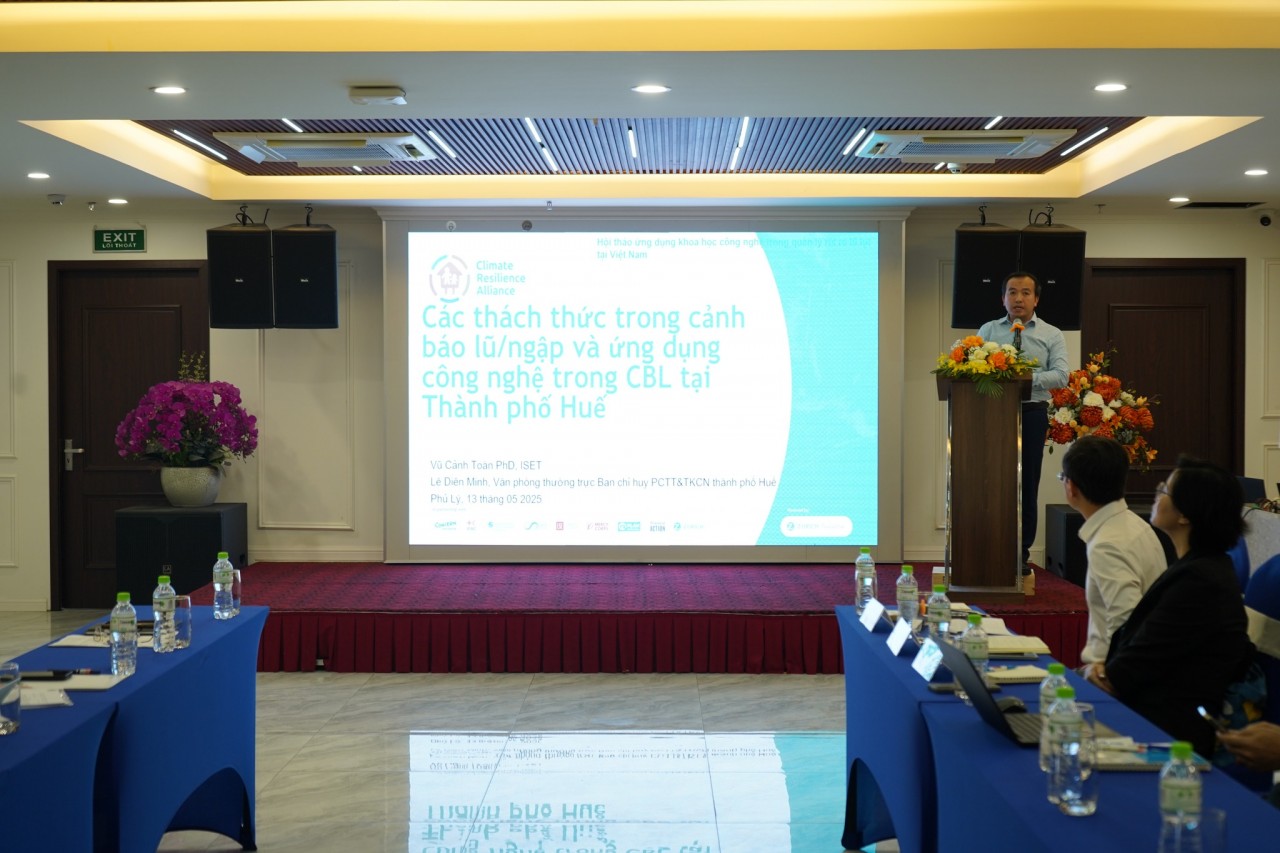 Viet's Home
Viet's Home
Harnessing Emerging Technologies for Flood Risk Warning in Vietnam
Popular article
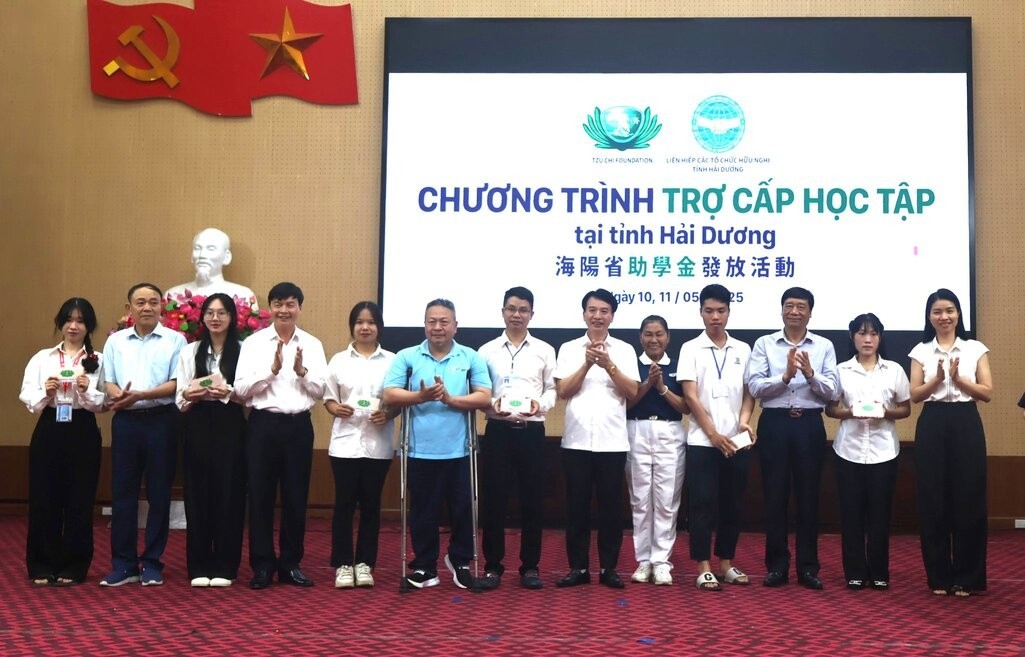 Viet's Home
Viet's Home
Tzu Chi Grants Over VND 2 Billion to Support Disadvantaged Students in Hai Duong
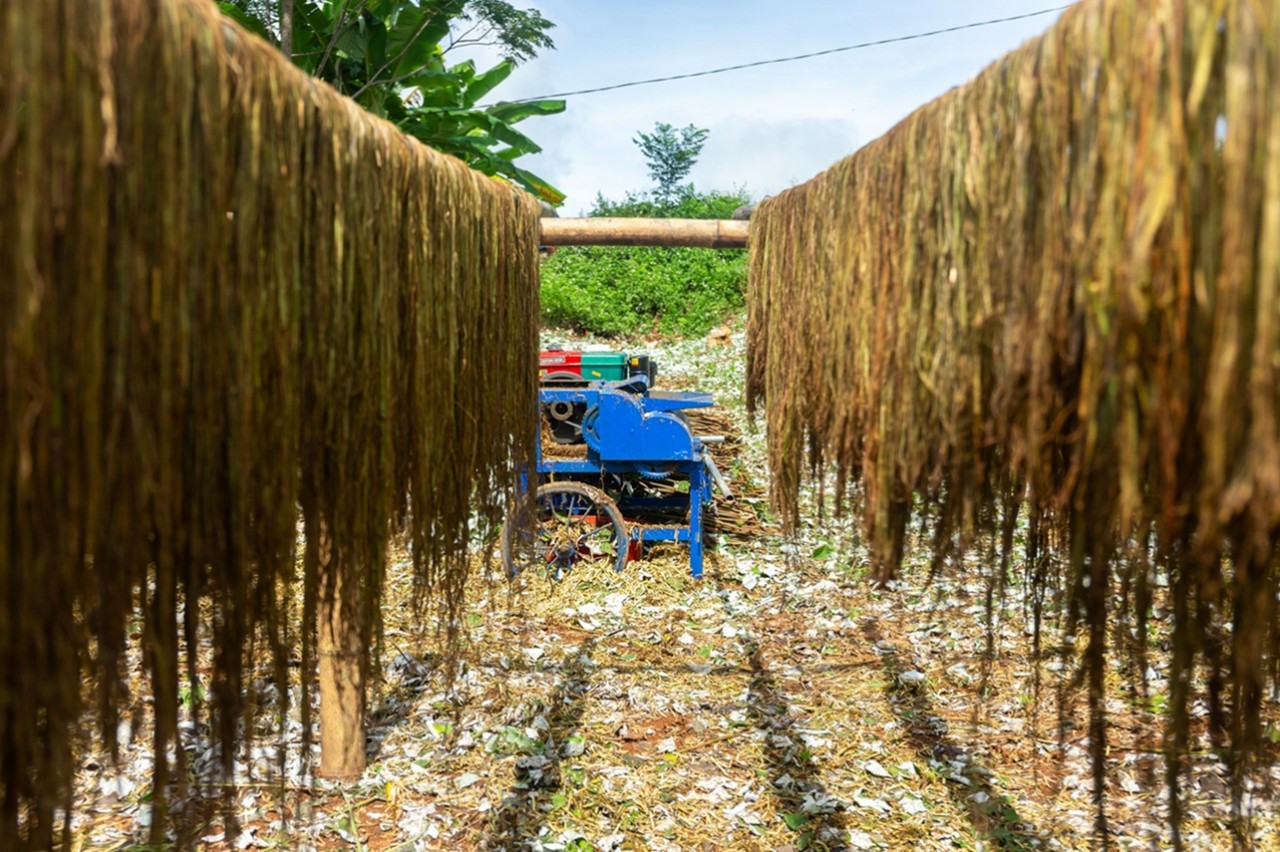 Viet's Home
Viet's Home
CARE Supports Hoa Binh Residents to Develop Sustainable Hemp Products
 Viet's Home
Viet's Home
"Ho Chi Minh Biography" in Greek Launched in Athens
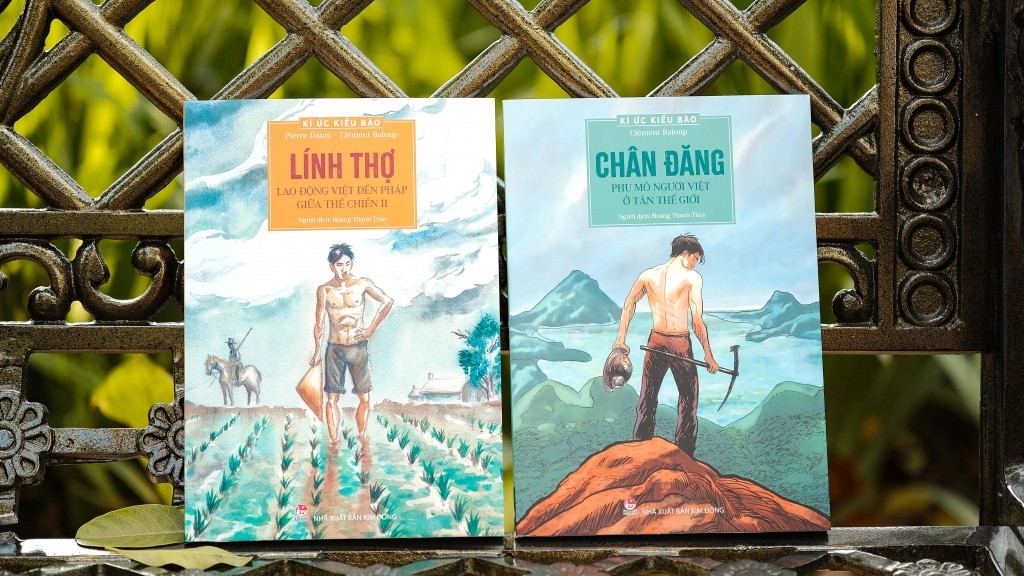 Viet's Home
Viet's Home



